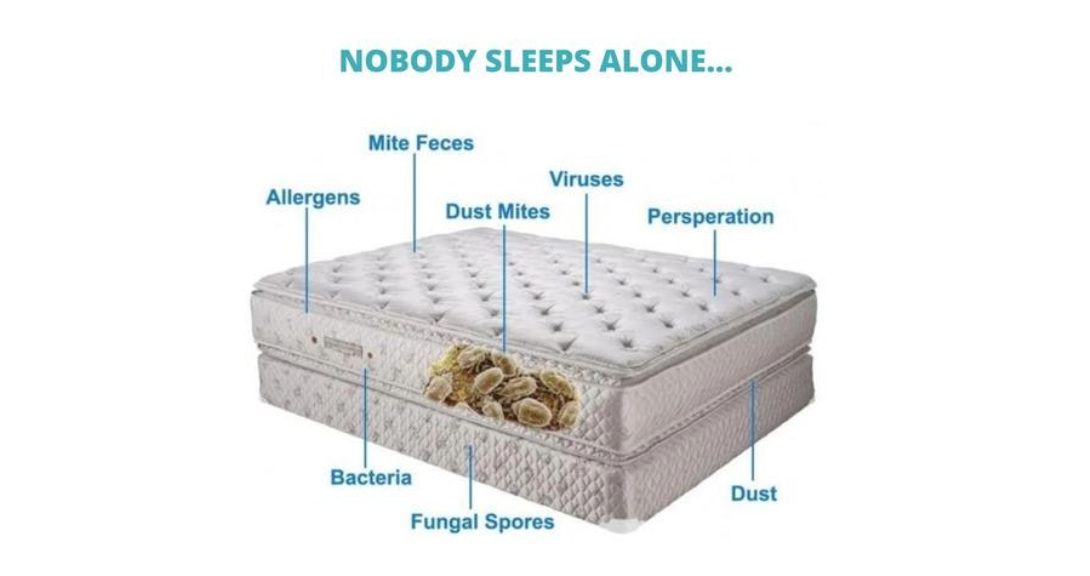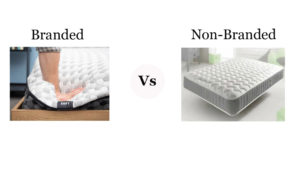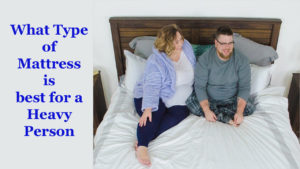We often ignore the need to sit back and identify whether our skin allergies are due to the mattress or not. Instead, most people think that excessive pollution levels, exposure to the sun for long hours, sensitive skin, and eating junk foods are some of the main reasons for allergies.
Since we neglect that mattresses can also cause allergies, we don’t get the right treatment. Thus, the skin problems never go away, and even if they do somehow, they recur after a certain period magically and quite frustratingly
That’s why in this article, we will talk about mattress allergies, their types, why do these issues occur and so on.
Contents
What is mattress allergy?
From the name itself, you can understand that a mattress allergy is a type of skin problem being caused due to sleeping on an improper mattress. For example, suppose you have latex allergies, and you sleep on a synthetic latex mattress. In that case, you are bound to suffer from rashes and break-outs. Similarly, after sleeping on a mattress that can’t regulate the airflow, you will suffer from itching, redness, and other dermal issues.
What are the types of allergies a mattress can cause?
By allergies, we mean any adverse reaction in your skin or any other parts of your body caused by certain elements known as allergens. In this case, the allergen is your mattress. So, how exactly will a mattress allergy look or what are its types?
If you aren’t aware of this information, there is nothing to worry about. However, this section will discuss the different types of allergies a mattress can probably cause.
- Reddish spots all over your hand and neck region
- Redness in your skin that spreads over a larger area and is localized
- Itching of the skin too much
- Pressure or bed sores on the skin after sleeping on the same side for a prolonged time
- Allergic break-outs in the skin all of a sudden
- Boils in the exposed areas of your skin
- Having difficulty in breathing (respiratory allergy)
- Formation of dead cell layers on the skin
- Smaller boils spread locally accompanied by itching
Why does a mattress lead to allergic reactions?
Since now you have an idea about the types of allergies a mattress can cause, it will be beneficial to learn about the causes. Yes, the mattress is the primary cause, but there are certain conditions due to that the bedding accessory can cause adverse reactions in your skin.
- If a lot of dust has accumulated on the mattress’s top layer, it will attract dust mites. These bugs are so tiny that you cannot see them with naked eyes. When you sleep on the mattress, they will bite your skin, causing allergies.
- After using a mattress for a long time, its capability of regulating the temperature almost diminishes. As a result, you will sweat excessively during your sleep that will cause boils or pressure sores. Sometimes, it can also cause itching and redness in the skin.
- Bedbugs in the mattresses also cause allergies. Their bite marks are larger than the dust mites, but those marks do ache a lot.
- If you are sleeping on a mouldy mattress, there are high chances you will suffer from allergies since mould is a kind of fungus. In such cases, you will have to deal with fungal skin problems that are hard to treat.
- If you haven’t cleaned and washed the top external cover of the mattress, bacteria and other microbes will grow inside the mattress. Therefore, they will cause skin allergies.
- Sometimes, synthetic latex can also lead to skin allergies because of the chemical enzymes present in it.
How to prevent allergies from sleeping on a mattress?
If you have sensitive skin or suffer from allergies, the following tricks will help you lower the risks. Also, these steps will prevent skin issues caused by a mattress.
- If your mattress has an external zipper cover, take it out and wash it with proper detergent at least once a week.
- Use a mattress duster to remove the dust and small debris. It will prevent the accumulation of impurities, and hence the dust mites won’t be able to breed on your mattress.
- Another thing you can do to reduce mattress allergies is by buying a hypoallergenic mattress. These mattresses are made from delicate materials on the skin and won’t cause any dermal problems.
- If the mattress’s surface temperature is not in control anymore, use a mattress pad with a high air-circulation rate for reducing the heat.
- Always rotate the mattress to ensure that the airflow channels are not blocked in a particular area.
- Do not eat anything or drink juice on the bed since the food stains or liquid spills will cause bacteria and fungi to grow.
- While buying a new mattress, be sure that you are not allergic to the materials used in its construction, like latex.
- If you have sensitive skin, look for mattresses that will be ideal for your skin type.
- Some mattresses come with an aloe-infused top layer or neem extract layer. These products are ideal for preventing skin allergies.
- Hiring a deep cleaning service for your mattress will be a great way to prevent allergies from developing in your skin.
Conclusion
This article has explained everything you need to know about mattress allergies and how they are caused. So, now we can hope that you won’t make the mistakes again that will put your skin’s health in jeopardy. Besides, you should look for hypoallergenic mattresses if you are planning to buy a new one. These products won’t cause any dermal issue, thereby keeping you safe from boils, break-outs, itchiness, and so on.



